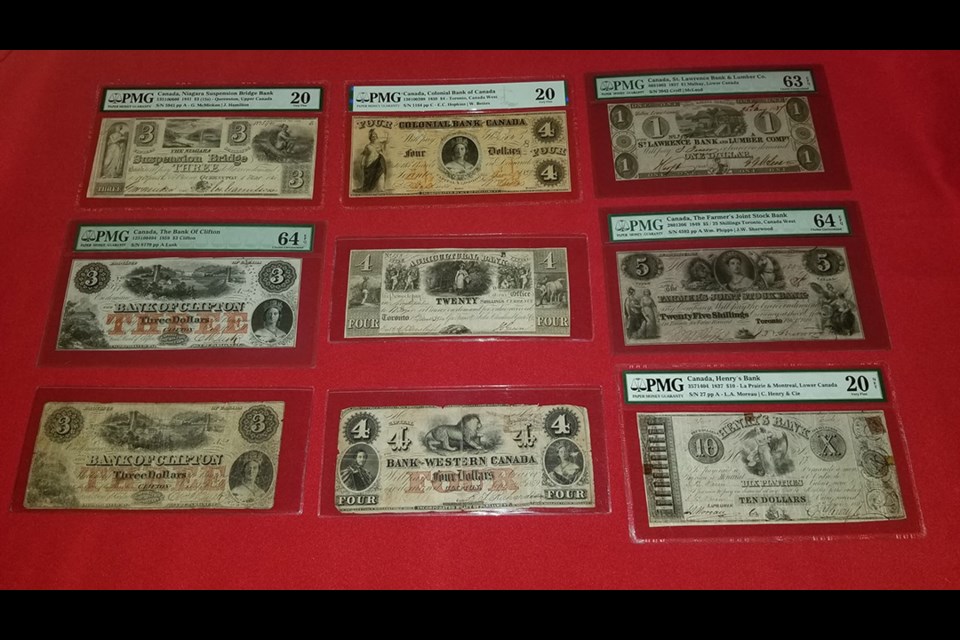Rare chartered banknotes and coin collections were on display at the Manor Library on Dec. 12, 2020.
With the help of Ashish Soobah, Ria Soobah and Parizaad Mohangoo, the Manor Library had organized a coins and chartered banknotes show. The main reason of that show was to educate the community about the old paper money used in the 1800s and early 1900s.
Ashish had displayed mostly chartered banknotes and scripts, including the rare $3 and $4 banknotes. Ashish had been collecting Canadian and Mauritius banknotes for the last four years. In that four years, Ashish had invested lots of hours researching, learning and acquiring rare coins and banknotes of Canada and Mauritius.
In the last couple of years, Ashish had done three coins and banknotes shows in the surrounding towns and he is not planning to stop soon. He wants to share his knowledge to more and more people and educate them about Canadian coins and paper money.
Between 1871 and 1944, Canadian chartered banks were authorized to issue banknotes for circulation in Canada. For several decades thereafter, the chartered banks were the only issuers of larger denominated notes for circulation in Canada.
There were around 166 chartered banks and over 8000 branches. In 1871, the smallest denomination allowed was $4, which was raised to $5 in 1880, which made the $3 and $4 banknotes more rare.Â
As of the end of 1944, the Canada government withdrew permission for Canadian banks to issue new banknotes for circulation in Canada and by 1950, liability for all outstanding Canadian banknotes was transferred to the Bank of Canada.
As per Ashish Soobah, $3 and $4 paper bills are extremely rare and lots of collectors pay more than book value for it.
Before banks were established in remote regions of Canada, paying employees involved shipping currency long distances into wild and often lawless regions. The alternative to this risky enterprise was for the company to issue its own money. Called Scrip, this private merchant currency was redeemable for products at the company store and even frequently in the local economy.
When employees returned from the bush, they were able to redeem their scrip for cash at the company head office. Established in 1900, the Grand River Pulp & Lumber Company operated a mill at Hamilton Inlet at the mouth of what is now the Churchill River near Goose Bay, Labrador.
From 1902-1911, the company issued scrip in five, 10, 25 and 50-cent denominations, as well as $1, $2 and $5 to pay their lumber workers.
Ashish Soobah who is originally from Mauritius, also collects Mauritius banknotes also. He is holding a extremely rare 500 dollars for Mauritius Commercial Bank dated July 25, 1839. This banknote has a solid low serial number 77, which makes it more valuable.




